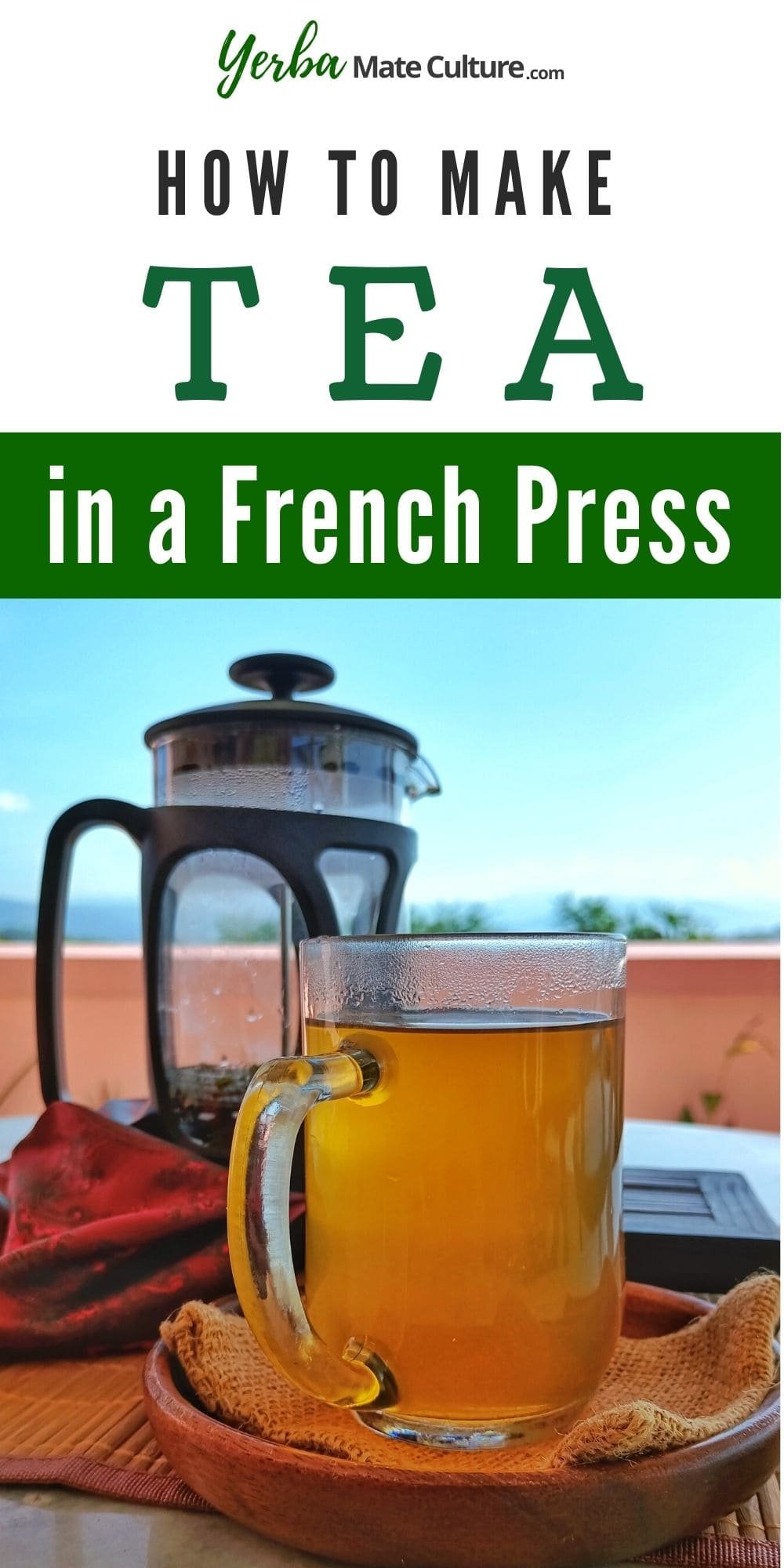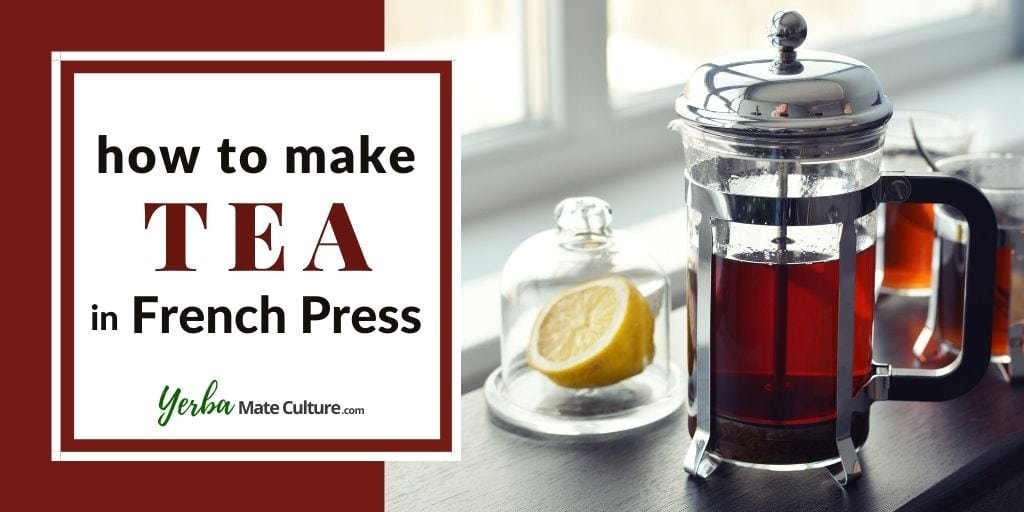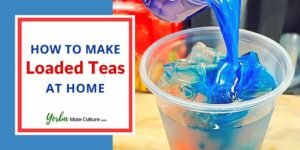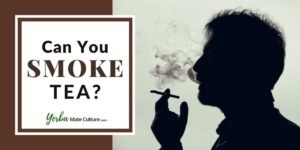Wondering if you can use a French press for brewing loose leaf tea in addition to coffee?
The short answer is, yes, you can use a French press coffee maker for brewing tea as well.
However, there are a few important things to know.
This guide explains how to make tea in a French press and why it’s a great way to brew your loose leaf. I will also give specific instructions for preparing different types of teas.
Can You Make Tea In a French Press?
Some people might think that a French press coffee maker can only be used for brewing coffee and that you need a teapot for making tea.
Well, obviously this is not true. You can even make tea with a filter coffee maker, although it’s not the optimal way.
Using a French press is actually one of the best ways to brew loose leaf tea.
The chances are that you already have one at home, so this saves you from buying any new equipment. And even if you need to buy one, you can find a high-quality French press for a decent price (see my recommendation later on).
Here is a summary of the pros and cons of making your tea with a French press:
Pros:
- Very easy to use
- Affordable
- Makes up to 4 cups of tea (depending on the size of your French press)
- Also convenient for making just one cup
- Easy and fast to clean
- You can use it to make both tea and coffee
Cons:
- Cleaning takes more effort if you use the same French press for coffee
In addition to using a French press, there are also many other ways to make tea without an infuser or a tea bag.
How to Use a French Press for Making Tea?
Making tea with a French press is fast and convenient.
Here is what you need:
- A French press coffee maker
- Loose leaf tea
- Hot water
The French Press
I recommend using a French press with a glass carafe as it allows you to observe the tea while it’s brewing.
It should also be made with durable and food-safe materials like glass and stainless steel. You don’t want any plastic parts to be in contact with your tea while it’s steeping.
Product Recommendation: Cafe Du Chateau French Press
This high-quality French press is affordable and user-friendly. It’s made with durable borosilicate glass and 304 stainless steel.
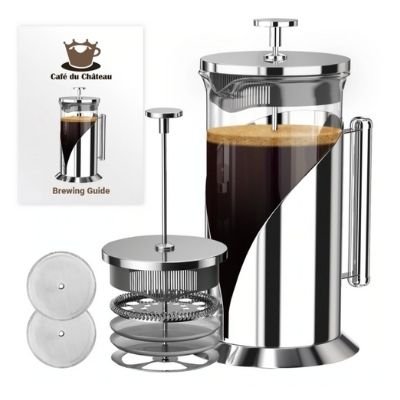
Loose Leaf Tea
One of the best things about drinking tea is that there are so many varieties to choose from.
The “real teas” are made of the leaves of Camellia Sinensis, also known as the tea plant. I enjoy trying anything from Japanese green teas to Assam black tea and delicate Chinese Silver Needle white tea.
Herbal teas are also a great option as they are almost always caffeine-free and can be used as natural remedies for many ailments.
Or why not experiment and create your own blend?
Here is what I used this morning:
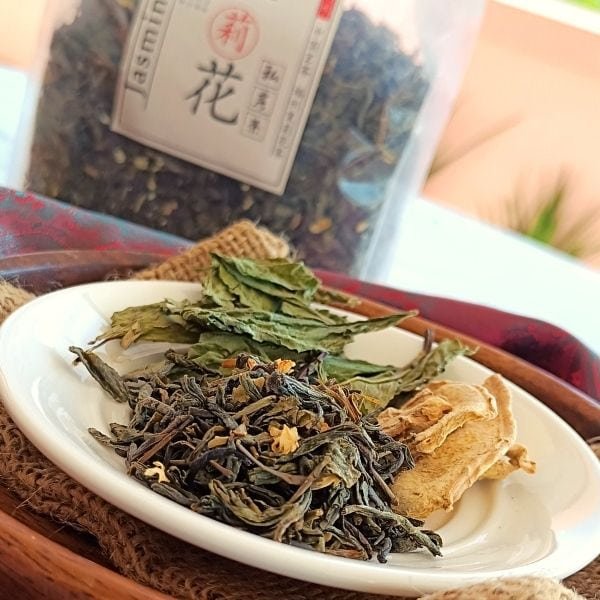
Heating the Water
The water temperature depends on what kind of tea you are making.
Boiling hot water might be ok for herbal tea and some black teas but it certainly makes green tea bitter and unpleasant.
You can simply buy a kettle and heat water on the stovetop. Whistling tea kettles are great for black tea and herbal teas because they let you know when the water is boiling.
If you are making green or white tea, I recommend getting a variable-temperature electric kettle so you can easily heat the water to the exact temperature that you want.
What if you don’t have an electric or stovetop kettle? You can also microwave water for tea, although it’s not the best method.
And one great option is to use the French press for steeping tea in cold water.
Making French Press Tea
Here are step-by-step instructions for brewing loose leaf tea in a French press.
Step 1: Add some loose leaf tea into the French press. Start with using one teaspoon per cup of water. You can adjust the amount next time to create a stronger or milder brew.
Step 2: Pour hot water into the carafe and put on the lid so the heat won’t escape. Don’t press the plunger all the way down yet.
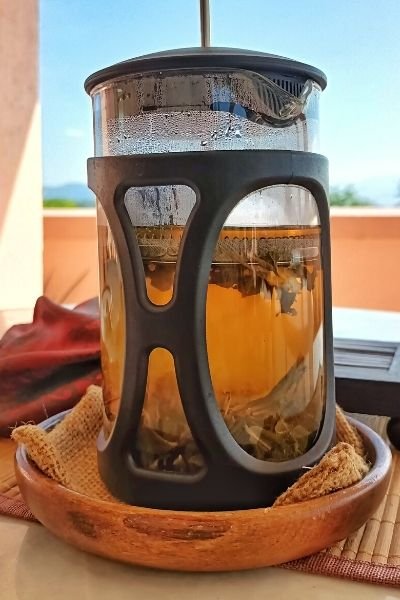
Step 3: Let the tea steep anywhere from 1 to 10 minutes depending on the type of tea (see more instructions later).
Step 4: Push the plunger down slowly and pour the tea into cups. Enjoy!
If you want to make iced tea, you should make a stronger tea and pour it into glasses with plenty of ice.
Instructions for Brewing Different Types of Teas
Not all teas are prepared the same way.
Here is a quick guide to brewing different types of teas plus some basic information about each:
Black Tea
Fully oxidized teas known for their bold, nutty taste, and deep aromas.
Water Temperature: 195-212°F (or 90-100°C)
Steeping Time: 2 to 5 minutes
Caffeine Per Cup: about 50 mg

Read my guide with the best black tea brands to find a nice option to try.
Pu-erh Tea
Fermented tea with a rich and earthy flavor.
Water Temperature: 212°F (or 100°C)
Steeping Time: 10 to 20 seconds
Caffeine Per Cup: about 50 mg
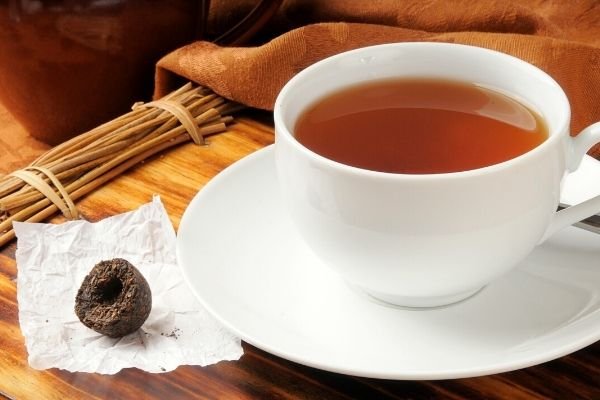
Oolong Tea
Partially oxidized tea with flavors ranging from light floral to rich and full-bodied.
Water Temperature: 194-203°F (or 90-95°C)
Steeping Time: 3 to 5 minutes
Caffeine Per Cup: about 40 mg
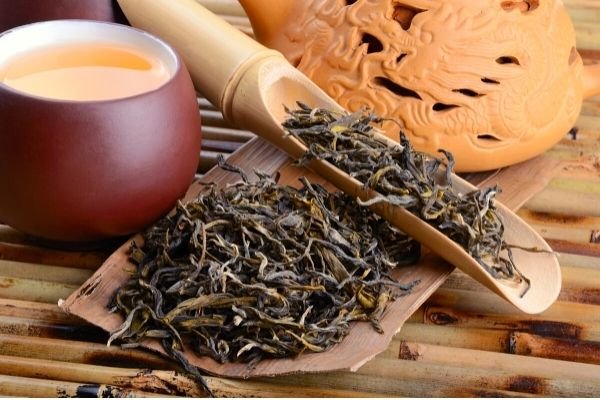
Green Tea
Largely unoxidized tea rich in antioxidants. Flavors range from grassy and sweet to strong, earthy, and smokey.
Water Temperature: 160-180°F (or 71-82°C)
Steeping Time: 2 to 3 minutes
Caffeine Per Cup: about 25 mg

White Tea
Handpicked from the first buds of the tea plant in spring, white teas have a delicately sweet and fresh flavor with floral notes.
Water Temperature: 160-175°F (or 71-80°C)
Steeping Time: 2 to 3 minutes
Caffeine Per Cup: about 20 mg
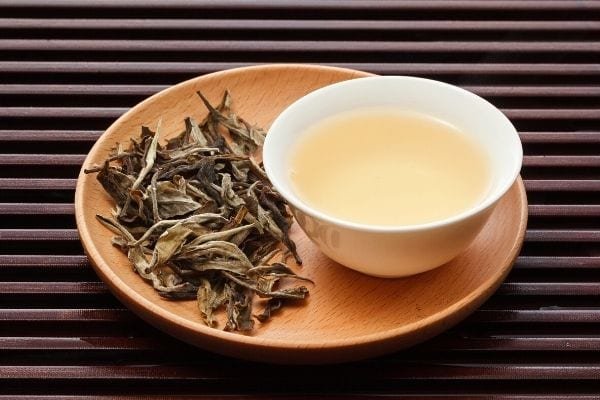
Herbal Teas
Anything from herbs and spices to barks and dried fruit. Herbal tisanes are mostly caffeine-free and can be brewed in boiling hot water.
Water Temperature: 212°F (or 100°C)
Steeping Time: 5 to 10 minutes
Caffeine Per Cup: none (exceptions: yerba mate, guayusa, and guarana are herbal teas that have caffeine)
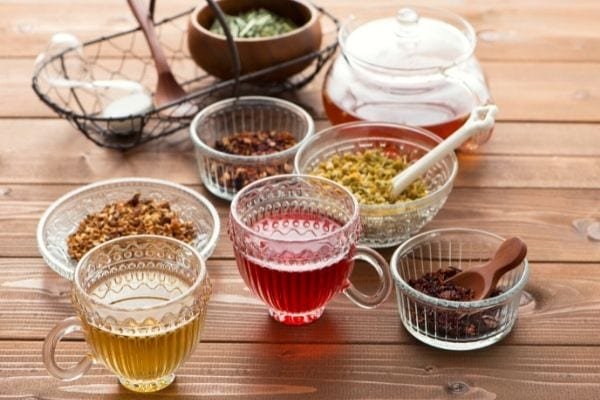
French Press Tea FAQ
Can I use the same French press for making coffee and tea?
Yes, you can use the same French press for brewing coffee and tea. However, if you drink both beverages frequently, I don’t recommend it as the coffee residues might affect the taste of your tea.
It’s best to have two French presses, one dedicated to coffee and the other one for loose leaf tea.
What type of French press is best for making tea?
It’s best to use a French press made with high-quality materials such as borosilicate glass and stainless steel.
This means that the product is durable and no harmful chemicals will dissolve into your tea. In addition, glass and stainless steel are easy to clean, and having a glass carafe allows you to observe the tea while it’s brewing.
How to clean a French press?
You can clean a French press by disassembling it and simply rinsing it with lukewarm water. You can also use a bit of dishwashing soap but it’s not necessary if you are only using it for brewing loose leaf tea.
If you use the same French press for making coffee and tea, I recommend cleaning it carefully with a brush or a sponge and dishwashing soap. Otherwise, your tea might end up tasting like yesterday’s coffee.
Which one is better when comparing French press vs tea infuser?
While tea infusers and tea balls are more commonly used for brewing loose leaf, a French press is also a great option. Which one is better, depends entirely on your personal preference.
One great thing is that you can also use a French press to cold brew tea — just add cool water and tea and steep for about 8 hours in the refrigerator.
Save on Pinterest:
